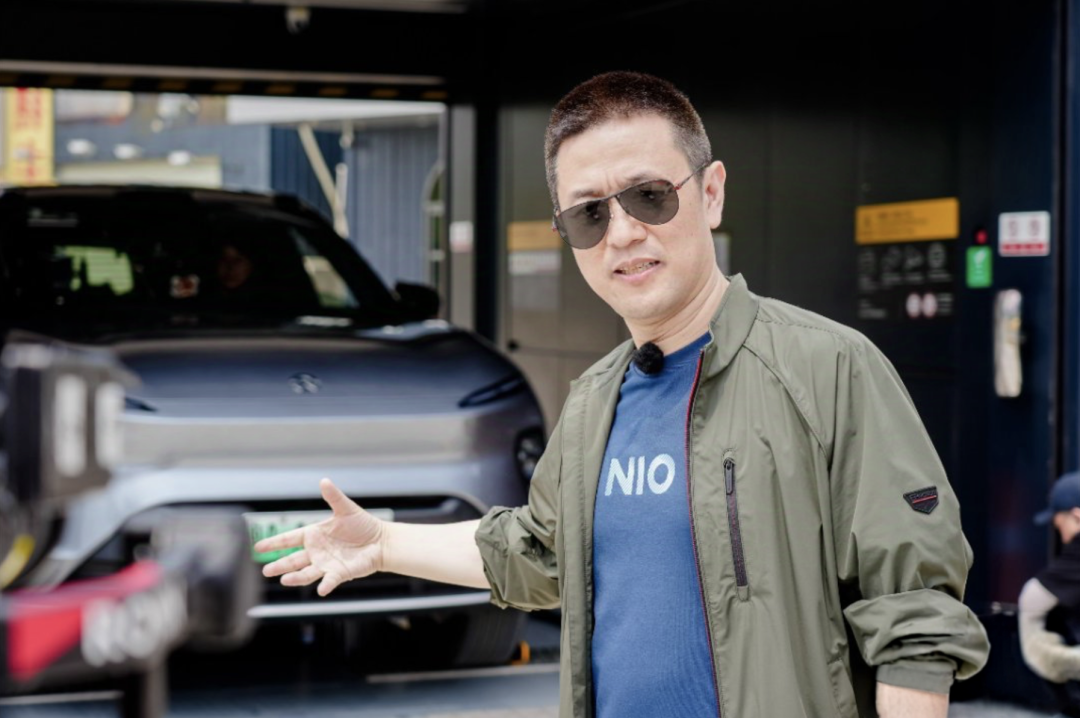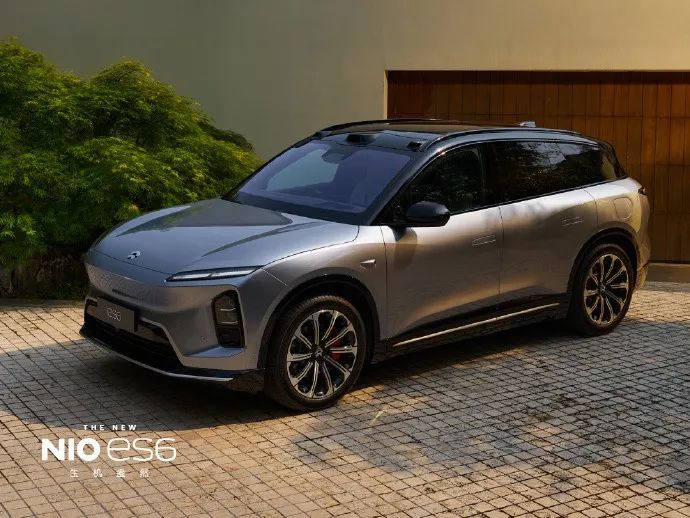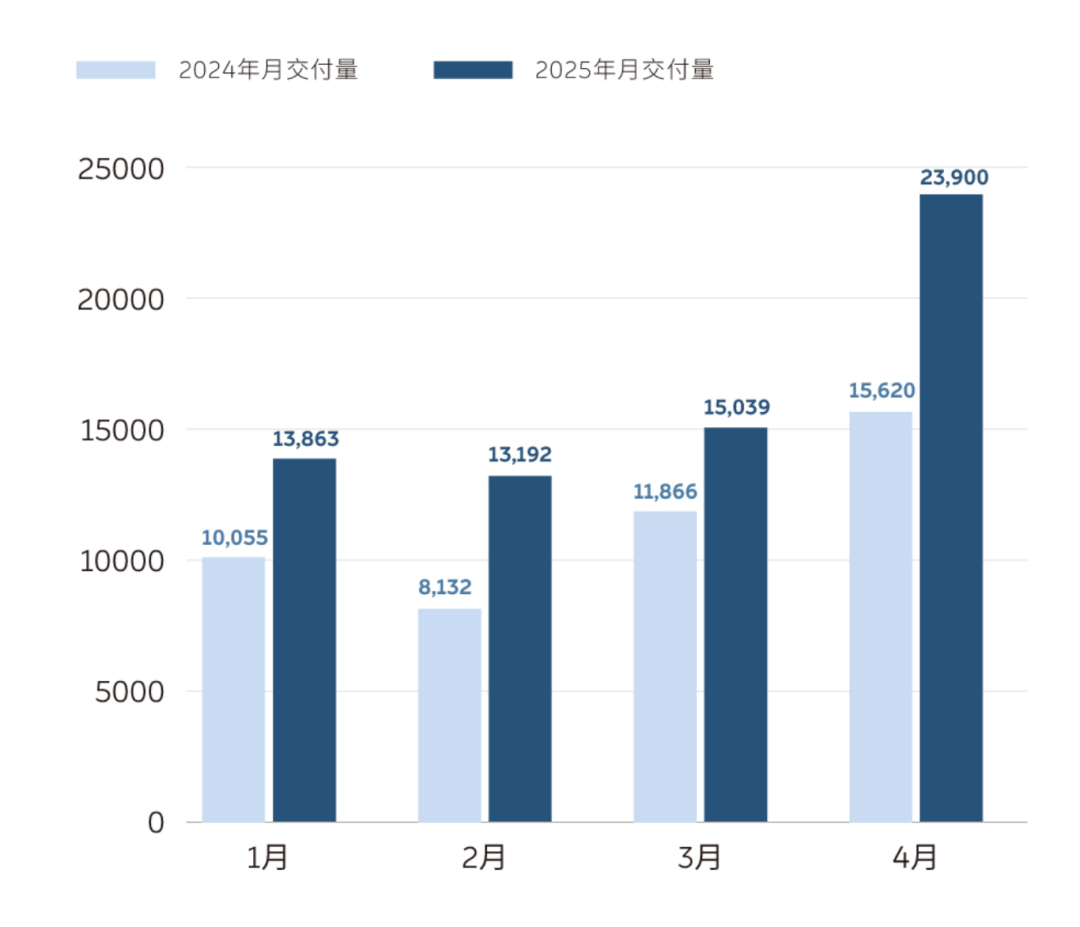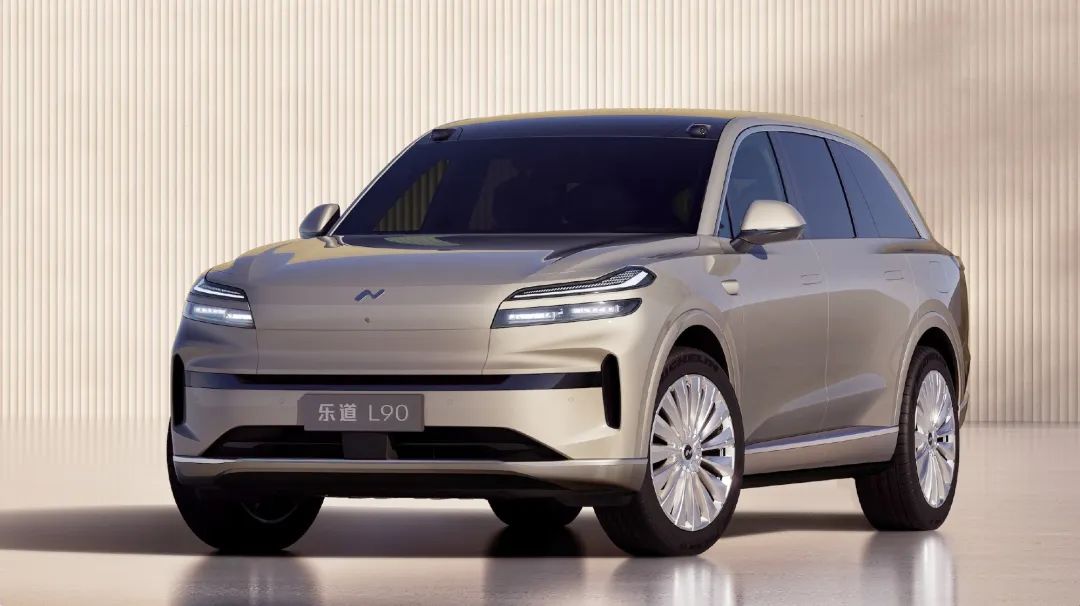Reassessing Li Bin's Efforts: Hard Work Alone Isn't Enough
![]() 05/22 2025
05/22 2025
![]() 526
526

The automotive industry is unforgiving of tears.
Author | Zhang Wen
Editor | Jiang Jiao
Cover | Li Bin's Weibo
After months of intense self-reflection and adjustment, Li Bin, the founder of NIO, has undergone noticeable changes.
Both of his recent product launches deviated from the previous extravagant style, opting instead for a more intimate setting at NIO House. These launches were crucial for NIO, one introducing the new Firefly model, the third brand, and the other being the annual update of the ES6/EC6, significant contributors to NIO's sales.
Both events were strikingly simple, devoid of stages, large screens, or even horizontal screens for live streaming. In the exhibition hall of NIO House, NIO's product managers sat directly in the cars, introducing the new models to users much like car reviewers. During the ES6/EC6 update launch, Li Bin stood among employees, holding a cup of coffee and observing, appearing in the footage for only a few seconds.
'We've become more pragmatic and have abandoned flashy tactics,' Li Bin said at a media briefing the day after the Firefly launch. According to him, renting a studio and hosting a launch event would have cost at least a few hundred thousand yuan, even with cost-saving measures. Now, they focus on spending money where it matters most.
Following last year's record loss of 22.4 billion yuan, Li Bin has sought to demonstrate a new side of NIO to the outside world. Besides internal company speeches and adjustments, he has held multiple media briefings, consistently emphasizing in interviews that NIO will reduce costs and improve efficiency this year, vigorously implementing 'basic business units' within the company, with each business report having a responsible person. The core message is that NIO is changing and will become profitable in the fourth quarter.
During a three-hour media briefing in March, Li Bin expressed his desire to be labeled as 'the hardest-working person' in 2025, with NIO aiming to 'be the company that makes the fastest progress' that year.
Li Bin is indeed diligent. He is often physically present on the company's front lines. In May, he hardly rested. On the eve of the May Day holiday, he visited 23 battery swapping stations in Guangzhou, inspecting NIO's Guangdong county-to-county battery swapping network and conducting a marathon live stream of 13 hours and 21 minutes. The next day, he rushed back to Shanghai to participate in the auto show.
Two days ago, on the first anniversary of the Lido brand, Li Bin and Shen Fei, the newly appointed head of Lido, conducted an endurance test from Shanghai to Hefei, driving 467 kilometers. The next day, they joined Qin Lihong and Shen Fei for a Lido anniversary live stream.
Before the ES6/EC6 launch, to demonstrate the new high-speed tire blowout safety control function on the 5566 models, Li Bin personally donned a racing suit and helmet, conducting a dual tire blowout test at 120 km/h in a closed road with an ES6.
However, the automotive industry is not short of diligent CEOs. Sometimes, being overly diligent isn't a positive trait, much like Xia Yiping, the CEO of Jiyue, who was also diligent in live streams and tests.
Fortunately, Li Bin is open to advice. NIO's organizational adjustments are ongoing, and whether these changes yield the desired results will soon be evident.
The Slightly Awkward 5566
In May, NIO launched four new models: the updated ES6/EC6 and ET5/ET5T. Collectively known as the '5566' in the market, these models drive NIO's sales. The ES6/EC6 target the 300,000 yuan price segment for pure electric SUVs, while the ET5/ET5T are the entry-level models with the lowest prices in the NIO brand.
Last year, NIO sold a total of 201,200 vehicles, with the ES6/EC6 accounting for about 100,000 units (according to Dongchedi data) and the ET5/ET5T contributing about 80,000 units annually (according to Dongchedi data). NIO's annual sales volume of 200,000 units was almost entirely supported by the four 5566 models, accounting for over 90% of total sales.
Perhaps for this reason, the 5566 models were the first to be launched in NIO's new vehicle update plan this year. The new ES6/EC6 have already started official deliveries, and the new ET5/ET5T will also be launched at the end of the month.
Unlike most new energy vehicles with unchanged appearances and routine interior or chip upgrades, NIO's 5566 models have undergone significant changes this year. They have finally adopted NIO's self-developed intelligent driving chip Shenji NX9031, and the new cars have also seen major changes in appearance and interior, with NIO claiming that the new ES6/EC6 have achieved a 40% hardware refresh throughout the vehicle.

NIO ES6 / Source: NIO Weibo
Zhou Haoran, the host of the car review program 'Telescope', said he originally expected only plastic parts to be changed in the new ES6's appearance, but in fact, all the metal parts of the car, except for the doors and tailgate, have been replaced. 'It really doesn't look like a carmaker trying to control costs would make such a major update,' said Zhou Haoran, who previously worked at NIO.
Many first-time features and configurations from NIO's flagship model ET9 have been downscaled to the new ES6, such as the same image technology as the ET9, high-speed tire blowout safety control function, and Shenji NX9031 intelligent driving chip. NIO also emphasized in the press release several safety configurations debuting on the 6 series, such as RCM rear-end collision prevention and protection function, emergency autonomous pull-over function, and more.
However, unlike the NIO NT3.0 platform used by the ET9, NIO's updated 5566 models this year still use the previous-generation platform with a 400V architecture in the core three-electric segment, distinguished by NIO as the NT2.5 platform. It should be noted that the Lido L60, released in September last year, has already adopted the NT3.0 platform with a 900V architecture.
This makes this year's updated 5566 models slightly awkward. All NIO models will be replaced this year, and other updated models to be released in the second half of the year are said to be based on the NT3.0 platform, meaning that the 5566 models, as the main sales drivers, will be the last generation of NIO models with a 400V architecture.
Many users on social platforms have expressed confusion about why the 5566 models did not adopt the NT3.0 platform in one step but instead opted for a half-generation transition, despite upgrades in interior, exterior, chips, systems, and even chassis. NIO also seemed to intentionally downplay the NT2.5 platform used by the new 6 series in its external promotion, barely mentioning upgrades to the three-electric system, including batteries and motors, throughout the entire launch event.
Part of the reason may be related to NIO's battery swapping system. Zhou Haoran mentioned in his car review program that the foundation of NIO's battery swapping system is that the more vehicles in circulation, the more available batteries there will be at the swapping stations. From this perspective, as the main sales drivers and models with the largest circulation for NIO, the 5566 models may be more cautious about platform switching.
Previously, when the Lido L60 was first launched, it also faced the issue of a scarcity of battery swapping stations. The batteries used by the Lido L60 are incompatible with the first and second-generation battery swapping stations that NIO has built on a large scale and can only be used with third and fourth-generation stations.
At its launch, there were only around 1,000 third-generation battery swapping stations available for Lido. After six months of renovation and new construction of battery swapping stations, the number of available stations for Lido reached approximately 1,960 in May this year. During the same period, NIO had 3,324 battery swapping stations.
Besides the ET9, most of NIO's other NT3.0 platform models will only be launched and sold in the second half of this year, including the already unveiled Lido L90. As the absolute main sales driver for NIO, the 5566 models perhaps cannot afford to wait for such a long time. Fortunately, compared with other competing models, even if the 5566 models do not use the latest 900V architecture, NIO's battery swapping network can alleviate range anxiety.
Lido, Yet to Stand Up
NIO's sales target for this year is to double last year's figure. Last year, NIO sold a total of 222,000 vehicles, equating to a sales target of 440,000 vehicles for this year. One-quarter of this year has already passed, but NIO's sales in the first four months were only 66,000 units, achieving only about 15% of the annual target.
Last year, NIO's biggest setback was its second brand, Lido. At its launch, Li Bin had high hopes for the Lido's first model, the L60, believing it would synergize with the main NIO brand, with NIO pursuing gross margin and Lido pursuing sales volume.
Initially, the Lido L60, priced at 200,000 yuan, maintained a certain positive momentum. In a media group interview after the L60's launch, Li Bin said that the company's backend server had been expanded fivefold, 'The L60 has indeed seen an explosion of orders.'
However, due to fierce market competition and limited production capacity, the Lido L60's explosive growth failed to continue. Except for a brief monthly sales volume exceeding 10,000 units in December last year, Lido's sales have basically remained at around 5,000 units for the past few months. Out of NIO's total sales volume of 222,000 units last year, Lido only contributed about 20,000 units.
Ai Tiecheng, the first president of Lido, announced his resignation in April. Before that, he had publicly set a military-style goal, declaring that Lido would deliver over 10,000 units in December last year, aim for 15,000 in January and February this year, and deliver over 30,000 in March. Except for achieving over 10,000 deliveries in December, Ai Tiecheng failed to meet the rest of his targets.

NIO's Monthly Deliveries in 2025
However, Ai Tiecheng's departure was still sudden. Half a month before his resignation, he emphasized in an interview that he would not give up, saying that walking away was the easiest thing to do but that it would be equivalent to giving up halfway, which was a small-minded approach.
Taking over from Ai Tiecheng is Shen Fei, the former head of NIO Energy. Unlike Ai Tiecheng, who joined halfway, Shen Fei is one of the core management team members from NIO's early startup stage, joining as early as 2015 and personally building NIO's charging and battery swapping system. Later, in an interview with the media, Li Bin said that he chose Shen Fei to take over Lido because Shen Fei is diligent, having built battery swapping stations and charging piles one by one, with over 3,000 battery swapping stations built, 'belonging to the type who can fight tough battles.'
One of Shen Fei's actions after taking office was to strengthen the synergy between the Lido system and the NIO system, such as allowing Lido users to enter NIO Houses, NIO car owners receiving delivery rewards for Lido car owners, and Lido car owners sharing NIO services. During the May Day holiday this year, Lido car owners could also enjoy the previously exclusive benefit of free charging and battery swapping on high-speed roads for NIO car owners.
After Shen Fei took office, Li Bin also strengthened the synergy and integration of the three brands under NIO. According to a report by 36Kr, NIO issued an internal announcement on May 9, integrating multiple organizational departments of Lido and Firefly into the NIO system, involving Lido brand product development, user service, vehicle marketing departments, as well as the Firefly business department.
Li Bin initially did not believe that Lido would compete with NIO. He previously said during an earnings call that only about 20% of users would have to choose between the NIO and Lido brands. However, the media has continuously cited cases of NIO sales and Lido sales undermining each other and competing for customers, and some automotive industry insiders have told 'Shan Shang' that there may be mutual erosion between the two brands.
Perhaps realizing this issue, NIO began adjusting the sales systems of Lido and NIO, with some regional heads of Lido now being concurrently held by NIO heads. Qin Lihong and Li Bin revealed in media interviews that starting from November last year, NIO adjusted its sales strategy, learning from Lianjia to establish a collaboration network where users referred by NIO sales to Lido stores would also earn rewards for the referrer upon successful transactions, and vice versa.
But even Shen Fei may find it difficult to rescue the current weak sales of the Lido L60. In the first month after taking office, Lido L60's monthly sales volume remained at 4,400 units, even declining compared to March.
The Lido L60, launched last year, will not be upgraded this year, and its sales growth may only hinge on the upcoming L90, scheduled to be launched in the third quarter. Unlike the Lido L60, which did not differentiate itself much beyond battery swapping, the L90 more intuitively highlights the advantage of 'large space' for families. Lido's third model, the L80, will also be launched in the fourth quarter, positioned as a large five-seater SUV.

Lido L90 / Source: Lido Weibo
Li Bin revealed that Lido's three models are primarily geared towards family users, hinting at a gradual resurgence in brand momentum. During a media interview, he emphasized, 'We are fully prepared and not lacking in resources.'
Lido faces pressure comparable to that of NIO. Within the family user market, Li Auto will also introduce its pure electric models, i8 and i6, in the second half of the year. Among family users, Li Auto enjoys significantly deeper brand recognition than Lido.
How much transformation can the receptive Li Bin effectuate?
Recently, Li Bin has likely been one of the Chinese CEOs receiving the most counsel. He humorously remarked, 'The entire internet is tutoring me on CEOship.'
Amidst peak internet discussion in March, he dedicated a three-hour media briefing to discuss the company's strategy and transformation. He admitted that they had previously been too lax in self-scrutiny and had been undergoing organizational changes since the latter half of last year. In January, he issued a letter to all employees, urging them to embrace and fully implement these changes this year.
One of the core elements of these organizational changes, as described by Li Bin, is a management approach known as the 'Basic Business Unit' (CBU). Li Bin explained that the essence of CBU is to foster a stronger operational mindset among all employees, encouraging cost-saving where possible and strategic spending where necessary, ensuring accountability for each business report.
Array
Array
Array
Array
Array
Array
Array
Array
Array
Array
Array
Array
Array
Array
Array








